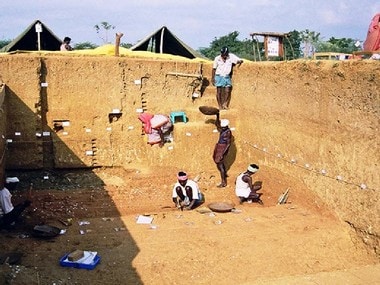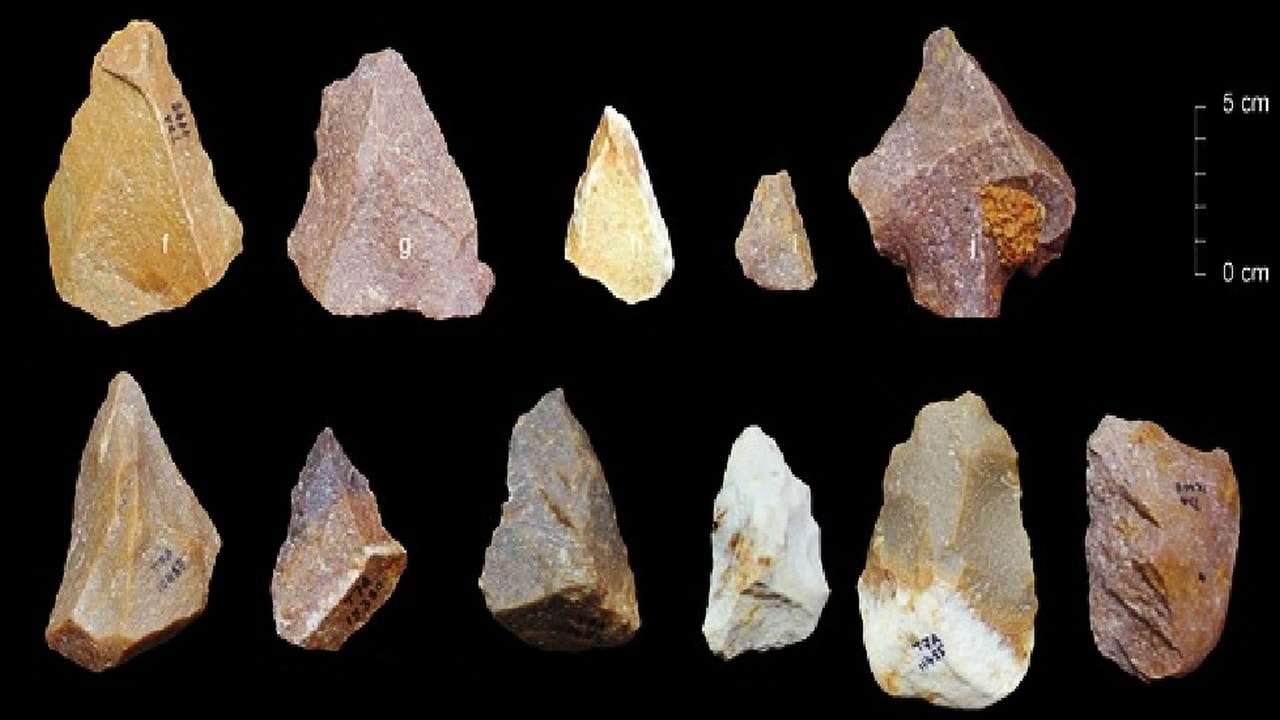385,000-year-old sophisticated stone tools near Chennai rewrites the history of technology in India
Indian scientists are challenging the popular scientific theory that the Middle Palaeolithic was brought to India by modern humans dispersing from Africa only around 125,000 years ago or later.

With the newly discovered Stone Age tools in a village near Chennai, Tamilnadu, new evidence suggests that a Middle Palaeolithic culture was present in India around 385,000 years ago — roughly the same time that it is known to have developed in Africa and in Europe.
Middle Palaeolithic period is considered an important cultural phase associated with modern humans and Neanderthals as well as other archaic hominins. Stone tools of this period are used by scientists as proxy for studies of early human behaviour.
The prehistoric stone tools excavated from Attirampakkam village about 60 kilometers from Chennai push back the period when populations with a Middle Palaeolithic culture may have inhabited India. The new study appeared in international scientific journal Nature on Wednesday.
“Our study presents a paradigm shift in thinking about the origin and spread of Middle Palaeolithic cultures in South Asia, suggesting a far greater antiquity and more complex story than we thought,” professor Shanti Pappu of Sharma Centre for Heritage Education, who led the research team, told India Science Wire.
In the absence of direct evidence in the form of fossils, the evolution of humans in Eurasia is often charted by changes in toolkits. Researchers studied over 7000 stone artefacts from Middle Palaeolithic layers at Attirampakkam. These tools collectively show a shift away from Acheulian technologies towards Middle Palaeolithic strategies such as the distinctive stone-knapping known as Levallois technique, presence of points, tanged points and blade technologies. Specific luminescence dating method was used to date tool-bearing sediments.
“Without fossils we cannot pinpoint the species, but we can suggest that multiple hominin dispersals associated with Middle Palaeolithic culture were occurring far earlier than around 125 thousand years ago with complex patterns, processes and interactions between species,” professor Pappu added. The presence of full-fledged Middle Palaeolithic culture in India long before any modern human migrations out of Africa brought these technologies implies that either such migrations may have occurred earlier than previously thought and may have played a role in development of the Middle Palaeolithic culture in India.

The stone tools found by Indian scientists. Sharma Centre for Heritage Education
Understanding the transition to the Middle Palaeolithic outside Europe and Africa is vital to the study of the lives and times of hominins in Eurasia, especially the appearance and subsequent migrations of anatomically modern humans within and out of Africa.
The archaeological site at Attirampakkam was discovered in 1863 by R. B. Foote and subsequently investigated by several scholars in the 1930s and 1960s. Professor Pappu and Dr Kumar Akhilesh from the Sharma Centre have been excavating at this place since 1999. The present work was conducted in collaboration Prof Yanni Gunnell from the University of Lyon, France; Prof Ashok K. Singhvi, Haresh M. Rajapara and Dr. Anil D. Shukla from the Physical Research Laboratory, Ahmedabad.
“What this site has taught us is to expect the unexpected, and it is a deeply humbling experience when preconceived ideas crumble around us. When we got the dates, we immediately realised the implications were mind-blowing. Dr. Akhilesh and I went back to the table to cross check our data again and again and to re-examine the stone artefact assemblages to be sure of our interpretation,” recalled professor Pappu.
Archaeologists analyzed more than 7,200 stone tools and found that this sophisticated tool-making technique, called Levallois, began replacing clunkier and more primitive stone tools between 449,000 and 321,000 years ago. This discovery is the earliest evidence of Levallois technology in India, according to a study published today in the journal Nature. It also pushes back the technological timeline there roughly 250,000 years.
“INDIA IS PART OF THIS NETWORK OF CULTURAL INNOVATION.”
Ancient human relatives — collectively known as hominins — started making heavy stone tools at least 1.75 million years ago. But roughly 300,000 to 400,000 years ago, hominins in Africa and Europe went through a technological revolution and began chipping blades and points off of portable stone cores. These Levallois tools were much easier to produce in large quantities, and they could be attached to sticks to make spears. Previous digs suggested that this more advanced technology didn’t catch on in India until much later, after around 140,000 years ago. So one theory said that modern humans brought their tool-making know-how with them to India when they first started leaving Africa around 125,000 years ago (give or take a few thousand years).
“These data show that was wrong,” says John Hawks, an anthropology professor at the University of Wisconsin-Madison who was not involved in the study. Today’s findings reveal that Levallois tools emerged in India roughly 385,000 years ago — right around the same time they started showing up in Africa and Europe.
That means “India is part of this network of cultural innovation that included Neanderthals and Africans,” Hawks says. Michael Petraglia, a professor of human evolution at the Max Planck Institute in Germany who also did not participate in the research, agrees that the discovery is a key piece of the puzzle. “It fills an important gap in our knowledge of an important crossroads,” he says.
While the new timeline means the old story about technology isn’t as convincing, it’s not clear what replaces it. One possibility is that there were earlier hominin migrations out of Africa that brought the technology with them. But it’s also possible that the discovery emerged simultaneously in Africa, Europe, and Asia, as hominins riffed on their standard stone tool-making strategies.
That’s Petraglia’s favorite explanation. “My view is that this doesn’t have anything to do really with an Out of Africa event,” he says. But he adds that it’s hard to say more until archaeologists uncover more clues. Today’s findings add to an emerging picture: ancient humans were a lot more like us than we assumed. “We carry our ideas with us, and trade ideas and exchange genes,” Hawks says. “They did that, too, even though the technology was much more basic than we use today.”
While the new timeline means the old story about technology isn’t as convincing, it’s not clear what replaces it. One possibility is that there were earlier hominin migrations out of Africa that brought the technology with them. But it’s also possible that the discovery emerged simultaneously in Africa, Europe, and Asia, as hominins riffed on their standard stone tool-making strategies.
That’s Petraglia’s favorite explanation. “My view is that this doesn’t have anything to do really with an Out of Africa event,” he says. But he adds that it’s hard to say more until archaeologists uncover more clues. Today’s findings add to an emerging picture: ancient humans were a lot more like us than we assumed. “We carry our ideas with us, and trade ideas and exchange genes,” Hawks says. “They did that, too, even though the technology was much more basic than we use today.”
No comments:
Post a Comment